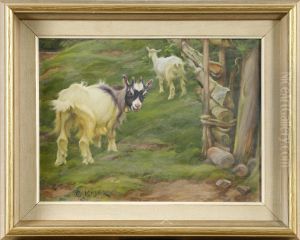Ernst Nicolaus Kusel Paintings
Ernst Nicolaus Kusel was a notable German artist from the Baroque period, born in 1620 in Augsburg, a city renowned for its artistic and cultural life during the 17th century. Kusel's work primarily consisted of engravings, which were a popular medium for reproduction and dissemination of artworks at the time. His engravings displayed a keen eye for detail and were characterized by intricate lines and elaborate compositions, reflecting the ornate style of the Baroque era.
Kusel was part of a family of artists, which was not uncommon for the period. Artistic professions often ran in families, with skills and workshops passed down from generation to generation. This environment would have provided Kusel with both the training and the connections necessary to establish himself as a professional artist.
Throughout his career, Kusel contributed to the rich tapestry of Baroque art, which was defined by its dramatic use of light and shadow, a sense of movement, and a detailed, sometimes overwhelming, embellishment. As an engraver, he would have reproduced not only his own works but also those of other prominent painters, thus helping to spread the Baroque aesthetic throughout Europe. His engravings would have been used for a variety of purposes, from book illustrations to standalone prints collected by art connoisseurs.
Ernst Nicolaus Kusel's death in 1688 marked the end of an era for his family's artistic legacy. However, his contributions to the art of engraving left a lasting impression, and his works continue to be studied by art historians and collectors. While not as widely known as some of his contemporaries, Kusel's engravings remain valuable examples of the skill and craftsmanship that typified the Baroque period in European art.
